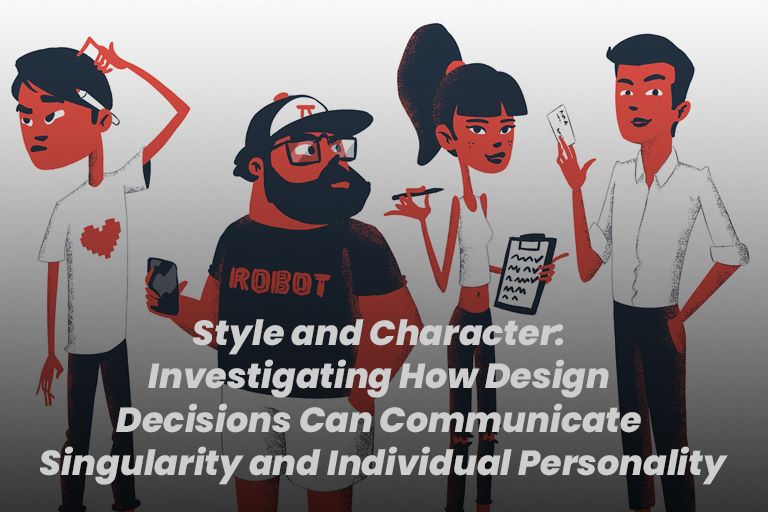Design has forever been a strong method for self-articulation, permitting people to convey their novel characters and exhibit their style. From the garments we wear to the frill we decorate, style fills in as a visual language that conveys what our identity is and how we see ourselves. It is a work of art that permits us to explore the mind-boggling scene of personality and layout associations with other people who share comparable qualities and feelings. In this article, we will dig into the connection between design and character, investigating how style decisions can reflect uniqueness and shape individual accounts. At its center, design is about decisions. Whether we settle on intense and lively outfits or incline toward downplayed style, the garments we wear become an augmentation of our characters. Our design decisions are impacted by a large number of elements, including social foundations, social conditions, individual convictions, and, surprisingly, the latest things. They mirror our qualities, perspectives, and yearnings, going about as a visual portrayal of what our identity is and how we wish to be seen by the world. One of the most striking parts of design’s job in character articulation is its capacity to rise above language hindrances. Design permits people to speak with others without expressing a solitary word. How we dress can pass on messages about our inclinations, callings, or subcultures we relate to. For instance, somebody brandishing a troublemaker-enlivened outfit with lively hair tone and intense frill is reasonable communicating their defiant soul and energy for nonconformity. Then again, somebody wearing customized suits and exemplary embellishments might extend a demeanor of refinement and incredible skill.
- Cultural Personality:
Style assumes a huge part in communicating social personality. Customary pieces of clothing, materials, and extras can act as an association with one’s legacy and social roots. By integrating components of their social legacy into their style decisions, people can declare their character and praise their family line. It permits them to keep a feeling of having a place while exploring multicultural social orders.
- Gender and Design:
The design has for some time been entwined with orientation character, testing, and rethinking cultural standards. It offers a stage for people to communicate their orientation personality and investigate contemporary introductions. The ascent of unbiased design and liquid styles has given open doors to self-articulation past conventional orientation limits, encouraging inclusivity and acknowledgment.
- Fashion as Strengthening:
Style can elevate and engage people. At the point when somebody feels great and certain about what they wear, it can emphatically influence their confidence and generally speaking feeling of strengthening. Design permits people to embrace their exceptional characteristics, commend their bodies, and venture into major areas of strength for self-esteem.
- Personal Change:
Style can work with self-awareness and change. Through design decisions, people can try different things with various styles and personas, embracing flexibility and self-disclosure. It gives a road to people to advance and communicate their evolving characters, mirroring their excursions of self-investigation and improvement.
- Fashion as a Type of Dissent:
The design has been a vehicle for social and political editorial, empowering people to offer their viewpoints and go to bat for purposes they have confidence in. It has been utilized as an amazing asset to challenge cultural standards, address issues of civil rights, and advance inclusivity. From motto shirts to runway shows areas of strength for which, design can ignite discussions and drive significant change.
- Economic and Natural Effect:
Style decisions can likewise mirror a singular’s qualities regarding manageability and moral practices. With the ascent of practical style developments, individuals are progressively aware of the effect of their attire decisions on the climate and work conditions. Selecting eco-accommodating brands or deciding to reuse and upcycle pieces of clothing can exhibit a promise of capacity utilization and individual qualities.
- Fashion and Close Home Articulation:
Style decisions can act for of close to home articulation, permitting people to convey their temperaments, feelings, and individual encounters. Splendid varieties and strong examples might mirror a dynamic and fiery character, while quieted tones and moderate styles might show an inclination for tranquility and effortlessness. Through style, people can impart their feelings and make a visual portrayal of their inward world.
- Fashion and Disruption:
Style has a long history of disruption and testing cultural standards. It has been utilized as a type of defiance and obstruction, permitting people to challenge shows and express their disputes. Subcultures like a troublemaker, grit, and cutting-edge design have been vehicles for nonconformist articulation, pushing limits and addressing standard beliefs. By embracing unusual styles, people can flag their refusal to adjust and declare their singularity.
- Fashion as Narrating:
Style decisions can recount individual stories and accounts. Each piece of clothing and embellishment might hold importance and recollections for the singular wearing them. It very well may be a treasured family legacy, a trinket from a significant outing, or a thing that addresses an individual accomplishment. By organizing a closet that mirrors their encounters and values, people can make a visual collection of memoirs, sharing looks at their lives and individual excursions.
- Fashion as an Advancing Interaction:
Style and character are not fixed elements yet rather advance and change over the long run. As people develop, their style decisions may likewise change, reflecting changes in their convictions, encounters, and self-discernment. Design permits people to adjust and investigate new features of their way of life as they explore various phases of life. A unique cycle welcomes trial and error, development, and self-disclosure.
- Fashion and Compassion:
Style decisions can likewise cultivate sympathy and understanding. By embracing styles and feelings related to various societies or subcultures, people can show appreciation for the variety and advance social trade. It permits them to draw in alternate points of view and challenge their predispositions, encouraging a more comprehensive and caring society.
Conclusion:
Style is a diverse method for self-articulation, empowering people to convey their characters, feelings, and individual stories. It can enable, challenge, and interface individuals from assorted foundations. By embracing design as a type of innovative articulation and advancing inclusivity, we can commend the excellence of distinction and cultivate a more lively and tolerant society.
Read more – Artificial Intelligence: Delivering the Power of Computations and Data




